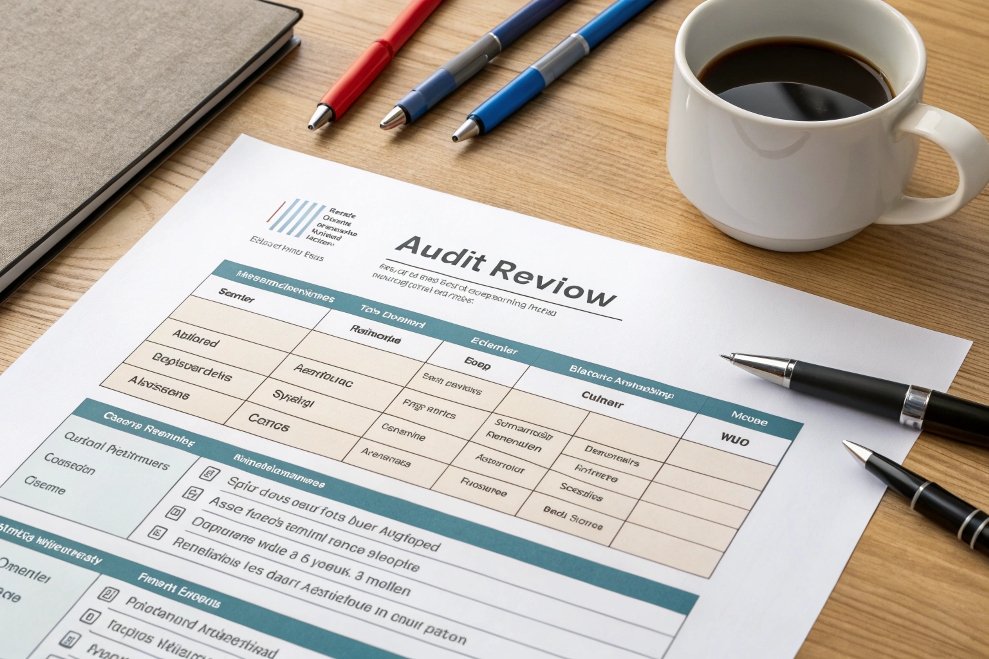
As someone who’s been involved in sourcing custom parts, I’ve found that supplier audits are one of the most effective tools to ensure high-quality production. Audits give you an in-depth look into your supplier’s operations, uncovering potential risks and areas of improvement. In this article, I’ll walk through how supplier audits can identify product quality issues1, best practices for using audits, and why corrective actions2 are crucial.
Supplier audits are a key method for identifying product quality issues early. By systematically evaluating suppliers, you can spot problems before they affect your orders and ensure that your custom parts meet high standards.
Supplier audits are not just a formality—they’re an investment in maintaining consistency and quality. The insights gained from these audits can help you catch issues that may otherwise slip through the cracks and improve your supply chain. Let’s dive into how supplier audits can be a game-changer in ensuring the quality of your custom parts.
How Can Supplier Audits Help Identify and Correct Product Quality Issues?

Supplier audits provide a detailed assessment of your supplier’s operations, helping you pinpoint where product quality may fall short. By identifying these issues early, you can correct them before they impact your orders.
Key Benefits of Supplier Audits for Identifying Quality Issues
| Benefit | Explanation |
|---|---|
| Detect Early Quality Issues | Audits help spot potential defects in the manufacturing process before they affect product quality. |
| Assess Manufacturing Processes | Auditors can evaluate the production line and processes, identifying weaknesses that may lead to poor quality. |
| Check Compliance with Standards | Supplier audits3 ensure that the parts meet industry standards and your specific requirements. |
How Audits Improve Quality
For example, during one of our supplier audits, we discovered that a particular manufacturing process had a slight error in temperature control, leading to inconsistencies in material properties. This could have resulted in defective parts, but because we conducted the audit, we were able to pinpoint the issue and fix it before the parts were shipped. Without this proactive approach, the defects would have been much harder to trace later on.
What Are the Best Practices for Using Audits to Ensure High-Quality Parts?

The success of supplier audits lies in their execution. Establishing best practices for audits helps you get the most out of these assessments, ensuring that the custom parts you receive are of the highest quality.
Best Practices for Supplier Audits
| Best Practice | Explanation |
|---|---|
| Plan Audits Regularly | Schedule audits on a consistent basis, not just when issues arise, to ensure continuous quality. |
| Involve Cross-Functional Teams | Involve engineers, quality control specialists, and sourcing managers to ensure a comprehensive review. |
| Document Findings | Keep detailed records of audit findings, including corrective actions and timelines. |
| Focus on Continuous Improvement | Use audits as a tool for ongoing process improvements, rather than as a one-time check. |
Why These Practices Matter
From my experience, planning regular audits and involving key stakeholders ensures that all aspects of production are covered. We once had an audit team that only focused on surface-level issues, and it missed some critical manufacturing steps. By getting input from multiple departments, we now ensure a deeper dive into every facet of the production process. This has improved product quality and helped prevent any hidden defects from slipping through the cracks.
Why Should You Implement Corrective Actions After Supplier Audits to Improve Quality?

Corrective actions are essential after an audit because they allow you to address and resolve issues immediately. Without implementing changes, the problems will likely persist and affect future orders.
Importance of Corrective Actions
| Reason | Explanation |
|---|---|
| Prevents Recurring Issues | Implementing corrective actions ensures that the same problems don’t keep arising. |
| Improves Supplier Accountability | Suppliers know that you expect them to make changes, creating a sense of responsibility. |
| Enhances Product Consistency | Corrective actions lead to more consistent and reliable product quality. |
Why This Matters
In one instance, after a routine audit, we found that a supplier’s quality assurance system wasn’t up to par. The audit report highlighted several gaps in their process, and we worked with them to implement corrective actions. By doing so, we ensured that the same issues wouldn’t recur and that the quality of the parts we received was consistently high. It also helped strengthen our relationship with the supplier because they appreciated the feedback and the opportunity to improve.
Conclusion
Supplier audits are a powerful tool to ensure high-quality custom parts. By identifying quality issues early, following best practices for audits, and implementing corrective actions, you can improve the consistency of your parts and strengthen your supplier relationships. With the right approach, audits not only highlight problems but also lead to continuous improvements that benefit both your business and your suppliers.
This resource will guide you on effectively identifying and addressing product quality issues, ensuring better outcomes for your custom parts. ↩
Understanding the significance of corrective actions can help you maintain high standards and prevent recurring issues in your supply chain. ↩
Exploring this resource will provide insights into how supplier audits can enhance quality control processes and improve product outcomes. ↩

